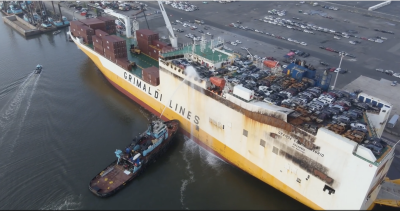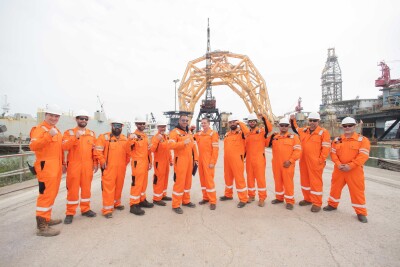Growing maritime traffic and bigger vessels are concerns in newly released ocean action plans for the Northeast and Mid-Atlantic regions.
With U.S. East Coast waters already crowded with commercial users, planners are looking to accommodate more traffic and energy infrastructure, including ambitious plans for offshore wind energy development.
“We’re seeing a lot of wind energy projects in the Mid-Atlantic…sometimes a wind project might be really close to these shipping lanes and fairways,” said John Kennedy, director of the U.S. Maritime Administration’s Mid-Atlantic Gateway office.
Born of the Obama administration’s 2010 National Ocean Policy initiative, the plans set a framework for cooperation and coordination among government agencies. The administration’s stated twin goals are maintaining healthy ocean ecosystems and sustainable ocean uses, while minimizing conflicts and supporting efficiency and economic growth.
Figuring out how to get there is the job of regional planning bodies (RPBs) that began meeting in 2013 to collect information and draft plans. The Northeast RPB issued its plan May 25, followed by the Mid-Atlantic plan July 5.
Following a 60-day comment period on regional plans, the White House National Ocean Council is expected to adopt the guidelines this fall. The hope is for a coherent framework for reviewing and permitting ocean uses that will survive in government institutions for years to come.
Much impetus for the project came out of the Obama administration’s early “all of the above” energy policy, with optimistic plans for oil and gas exploration on the Atlantic continental shelf, coupled with developing wind energy infrastructure.
The Deepwater Horizon disaster effectively took East Coast drilling leases off the table for several years. Cheap natural gas on land – and cautions from other maritime interests – slowed wind development as well.
But wind power again is gaining traction, with both U.S. and European wind companies bidding on offshore lease offers from the Bureau of Ocean Energy Management. That’s brought new urgency to the notion of ocean zoning, and heading off conflicts with other ocean users.
“BOEM can’t do their duty of issuing permits for wind farms if they’re getting sued for every one,” said Anne Merwin, director of ocean planning for the environmental group Ocean Conservancy.
For Marad, the Coast Guard and the maritime industry, safety is a key concern.
A recent BOEM lease proposal off New York “is right on top of a shipping lane,” said Kennedy, who represents the U.S. Department of Transportation on the Mid-Atlantic RPB. “We’re all about making sure there are sufficient safety buffers.”
Barge operators and the industry group American Waterways Operators have been advising the RPBs. One message they bring is how technological advances will change the way they do business and use ocean routing, said Tony MacDonald, director of the Urban Coast Institute at Monmouth University in New Jersey.
Those changes include bigger, more capable articulated tug-barge (ATB) units capable of transporting more than 250,000 bbl. of petroleum products.
Meanwhile deep draft vessels are steadily growing in size. The first neo-Panamax container ship to transit the widened Panama Canal, the 1,105’x158’ MOL Benefactor with 10,000 TEU capacity, called July 8 at Global Terminal, Bayonne, N.J., before continuing on to Norfolk, Va., and Savannah, Ga., generating headlines all the way as the biggest cargo vessel ever to dock in those ports.
“Within 30 years, it's been forecast we will have 100 million more people in the population,” most of them close to seaports, Kennedy said. That means a lot more commodities and goods moving by water, he said.




.png.small.400x400.png)
